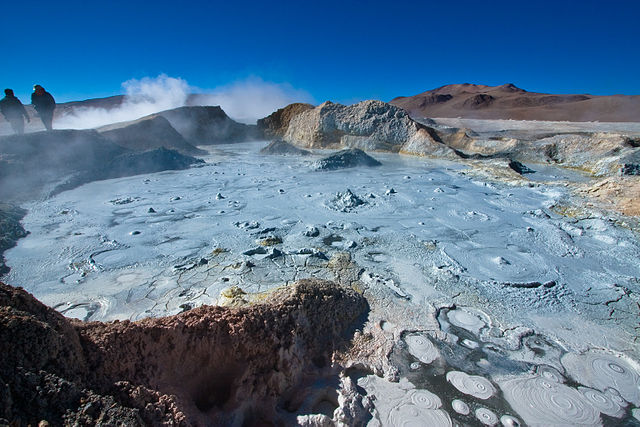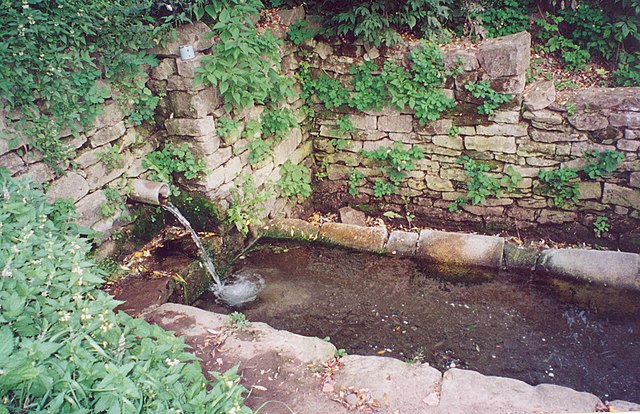Geothermal activity is a group of natural heat transfer processes, occurring on Earth's surface, caused by the presence of excess heat in the subsurface of the affected area. Geothermal activity can manifest itself in a variety of different phenomena, including, among others, elevated surface temperatures, various forms of hydrothermal activity, and the presence of fumaroles that emit hot volcanic gases.
A fumarole in the Solfatra crater, the orange and yellow colouration is from minerals that are deposited by the superheated fumes as they cool to ambient temperature.
Geysir, a geyser in Iceland, after which the phenomenon is named.
Mud pots in the Sol de Mañana Hydrothermal field, Bolivia.
Two Hot springs in Waiotapu, New Zealand, with Artist's Palette in the foreground, and Champagne Pool directly behind it in the background.
Groundwater is the water present beneath Earth's surface in rock and soil pore spaces and in the fractures of rock formations. About 30 percent of all readily available freshwater in the world is groundwater. A unit of rock or an unconsolidated deposit is called an aquifer when it can yield a usable quantity of water. The depth at which soil pore spaces or fractures and voids in rock become completely saturated with water is called the water table. Groundwater is recharged from the surface; it may discharge from the surface naturally at springs and seeps, and can form oases or wetlands. Groundwater is also often withdrawn for agricultural, municipal, and industrial use by constructing and operating extraction wells. The study of the distribution and movement of groundwater is hydrogeology, also called groundwater hydrology.
Dzherelo, a common source of drinking water in a Ukrainian village
The entire surface water flow of the Alapaha River near Jennings, Florida, going into a sinkhole leading to the Floridan Aquifer groundwater
Groundwater may be extracted through a water well
Center-pivot irrigated fields in Kansas covering hundreds of square miles watered by the Ogallala Aquifer








